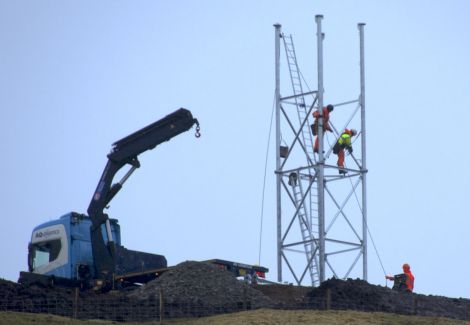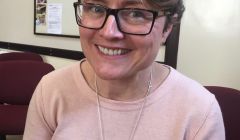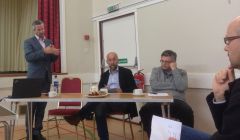Emergency services / Major progress being made in delivery of 4G mobile network
MOBILE network 4G coverage is at a “record high” in Shetland with 23 4G sites switched on since 2017 and another 28 planned.
According to network operators EE five new 4G sites are due to be switched on and a further two are due for upgrade.
Two so-called Extended Area Service (EAS) sites are also planned for the Northern Isles as part of EE’s delivery of the emergency services network, which will make use of the new masts. All the new sites are open to being shared with other mobile network operators.
Work is well underway to erect a mobile tower on the Ward of Reawick, which should improve coverage in that part of the westside, hitherto largely a “notspot”.
Fibre network cable is also being laid alongside the stretch of the B9071 between Parkhall and Reawick as part of a government scheme, bringing high speed broadband to the area for the first time.
EE, which is the UK’s largest mobile operator and part of BT Group, announced yesterday (Monday) that it had switched on 2,300 4G sites across Scotland since 2012, bringing coverage to areas which had no mobile coverage before.
According to EE, 69 per cent of rural areas across Scotland can now receive a 4G service from the company.
EE has switched on its low-frequency 800MHz signal – which improves indoor mobile coverage – in around 800 sites across Scotland. This lower frequency signal has filled in large areas that were previously 4G “notspots”.
Scottish minister for energy, connectivity and the islands Paul Wheelhouse said: “Thanks to this very significant investment and work carried out by EE, which we warmly welcome, many people in Scotland’s most hard-to-reach areas will by now be able to benefit from dependable and fast mobile speeds for the first time and this investment also benefits the many tourists and business travellers coming to Scotland, too.”
Become a member of Shetland News
The new Emergency Services Network is intended to connect 300,000 UK emergency services personnel when it is fully operational.
Orkney and Shetland MP Alistair Carmichael, meanwhile, welcomed yesterday’s signing of the Shared Rural Network agreement by the four major mobile network operators.
The deal is intended to take 4G coverage to 95 per cent of the UK by the end of 2025, with guaranteed coverage for 280,000 premises and 16,000km of roads.
Networks have committed to investing £532 million to close almost all partial “notspots”, which have coverage from only one operator.
This is backed by £500 million of government funding to eliminate total not-spots – areas with no coverage from any operator.
Carmichael said: “A final agreement on the Shared Rural Network is welcome news for the isles. The slow progress on establishing basic connectivity for businesses and individuals in the Northern Isles has been deeply frustrating. Concrete action to remedy this problem can only be a good thing.
“This, however, is only the first step. I have been led to understand that the first upgrades to the network are to begin in the Autumn, and we will be looking for swift action.
“With a plan in place and an agreement signed there can be no more excuses. By 2025 islanders will rightly expect an end to coverage ‘notspots’ and the arrival of a mobile network fit for purpose.”
Become a member of Shetland News
Shetland News is asking its readers to consider paying for membership to get additional perks:
- Removal of third-party ads;
- Bookmark posts to read later;
- Exclusive curated weekly newsletter;
- Hide membership messages;
- Comments open for discussion.
If you appreciate what we do and feel strongly about impartial local journalism, then please become a member of Shetland News by either making a single payment, or setting up a monthly, quarterly or yearly subscription.




































































